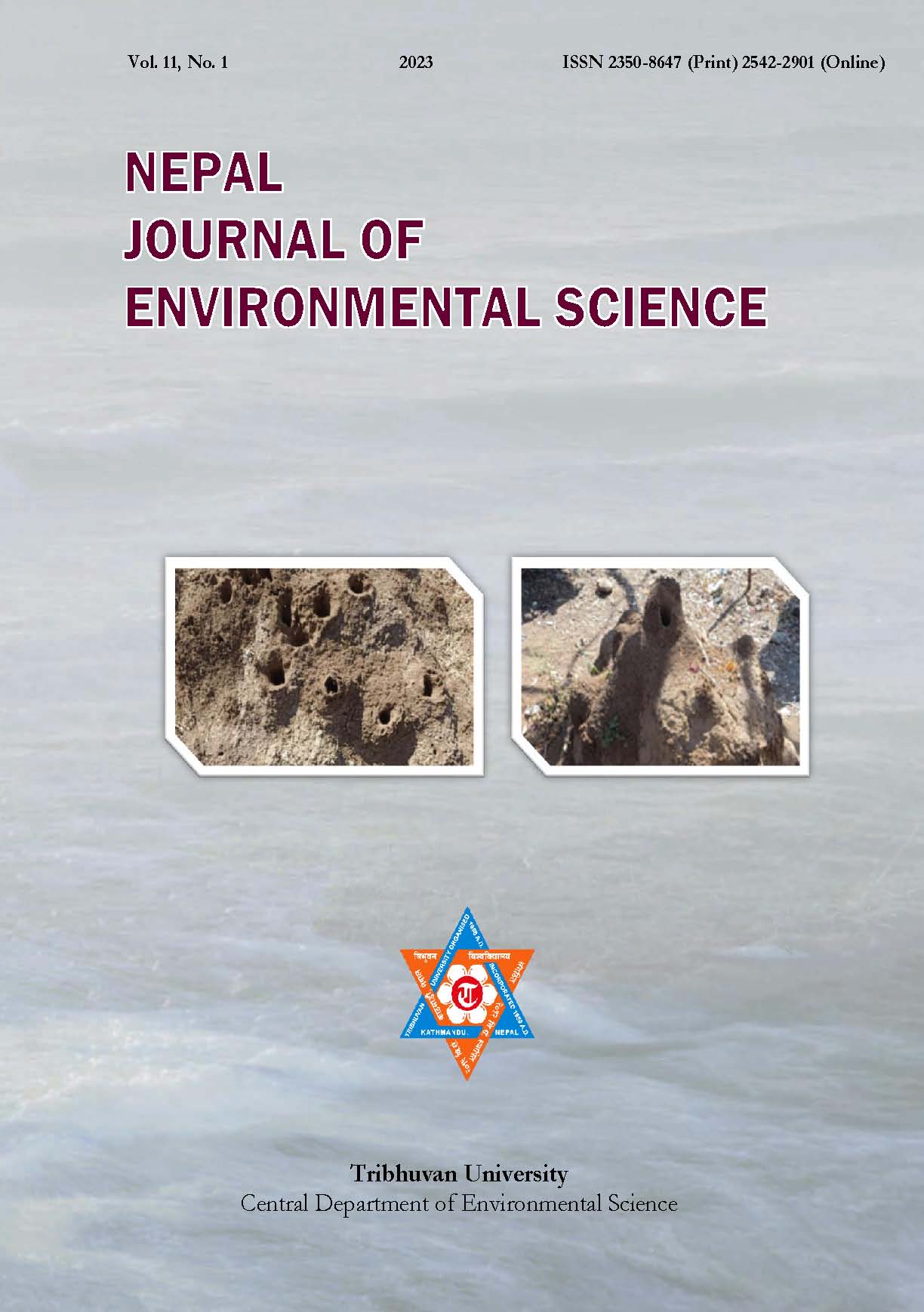Morphological and elemental analysis of termite mound and ant nest in agriculturally prominent area
DOI:
https://doi.org/10.3126/njes.v11i1.49170Keywords:
Bioindicators, economical, heavy metal, minerals, soil, toxicityAbstract
Soil management is important for the farmers to improve the crop yield. In nature some invertebrates serve as bioindicators and biomonitors. Biogenic structure built by insects is important for controlling soil erosion and water reserves. Ants and termites nest architecture along with the elemental analysis was studied to evaluate soil health and possible threats imposed by heavy metals in the area. The soil samples were collected and analyzed for various parameters. Systematic study of porosity, composition, and nutritional values of soil in ant nest and termite mound were done. The Atomic Absorption Spectrophotometer and Inductively Coupled Plasma Mass Spectrophotometer studies showed that ant nest and termite mound samples were found to contain elements viz., zinc, selenium, lead, cadmium, nickel drought and chromium. Based on Scanning Electron Microscope-Energy Dispersive Analysis of X-rays, the size of soil samples collected from ant nest and termite were found to be 27.77 nm and 25.56 nm, respectively. The corrosion resistant zirconium and titanium metals were detected in 0.68 and 0.39% concentration in ant nest and termite mound samples, respectively, representing the insect house as a possible source of rich metals. The ant nest and termite mound materials contain quartz, microcline, kaolinite, and clay minerals. Ant nests and termite mounds can thus be used as hydrological indicators to address the problems of soil erosion.
Downloads
Downloads
Published
How to Cite
Issue
Section
License
Copyright (c) 2023 Central Department of Environmental Science, Tribhuvan University

This work is licensed under a Creative Commons Attribution-NonCommercial 4.0 International License.
This license enables reusers to distribute, remix, adapt, and build upon the material in any medium or format for noncommercial purposes only, and only so long as attribution is given to the creator.

